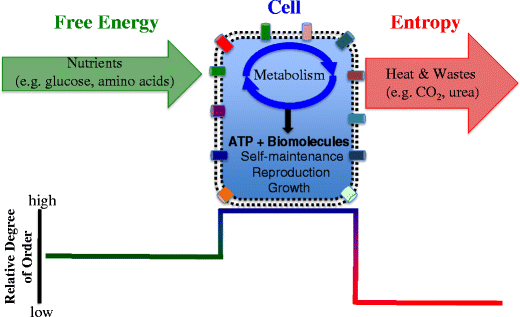

In a real sense, the idea of an energy “potential” is the idea of energy being able to go “down hill” to be useful.

In short, in whatever form energy exists, work can be obtained only if the energy is present in a state of greater intensity in one portion of the system and lesser intensity in another portion.ii Electrical potential differences in batteries represent available energy, as do chemical potential differences in certain chemical formulations. Differences in temperature create a potential for heat engines, such as the automobile engine. But falling water is not the only form of potential energy available for work. Water wheels rely on a difference in water level to create the energy “potential” necessary to do work. For this reason, the reader is urged to consider carefully the following discussion, where every effort has been made to avoid overly tedious Understanding the Second Law (and the evolutionist response) is necessary for an understanding of how it is a powerful argument against natural, unguided evolution. Darwinists are predictable in their disregard and dismissal of the serious problems presented by the Second Law. The Second Law of Thermodynamics (the “Second Law”) in particular bears on evolution in a way that must be understood, given that on its face it flatly contradicts the ideas of evolution. There are two important laws of thermodynamics, aptly named the First and Second Laws of Thermodynamics. What do work and energy concepts have to do with evolution? The concept of available energy, especially “potential energy,” has been well developed in science, and is expressed by the laws of thermodynamics. If the water had anywhere else to flow or fall, it could lose additional “potential,” which could likewise be directed as work if harnessed. Thus, within the constraints of the system (and assuming the water fell to a flat, level surface), the water is at its lowest available energy state, constrained by the ground so that it can do no more work. After falling, it no longer had potential energy with respect to the water-water wheel system. Before the water fell it had a certain “potential” energy available to do the “work” of turning the wheel. Thus a water wheel (as on old mill houses) is driven by the force exerted by moving water as it falls and applies a force through a distance. “Available energy” is required for any process to do “work”-a term having a defined meaning in physics of “force multiplied by distance.”i Directed work is required to drive a process of any kind in a direction of increasing order-such as is necessary for Darwinian evolution. Available energy is energy having the potential to exert a force through a distance. Reason, the reader is urged to consider carefully the following discussion, where every effort has been made to avoid overly tedious detail. (and the evolutionist response) is necessary for an understanding of how it is a powerful argument against natural, unguided evolution. Second Law is dismissed flippantly and casually, as if its inapplicability to evolution is hardly worth elaboration. Tendency to prevent the incredible ordering necessary for evolution is circumvented by including the sun in our local earth system. In the case of evolution, Darwinists say, the Second Law’s The stock reply from virtually allĭarwinists to this objection is that the Second Law applies only to closed systems. Requires matter to go spontaneously from a simple, random form to a more complex, specified form. Adapted from The Cave Painting: A Parable of Science (Access Research Network, 2006), by RoddyĪbstract: On its face, the Second Law of Thermodynamics stands diametrically opposed to any theory, including biological evolution, that


 0 kommentar(er)
0 kommentar(er)
